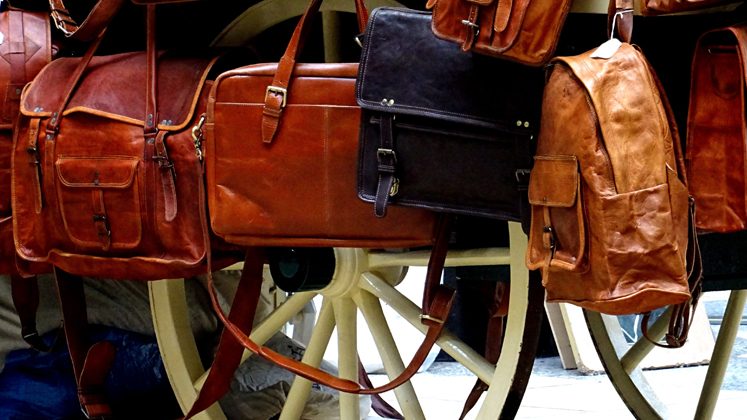
Bangladesh exports about 50 types of leather and leather goods to nearly 80 countries and regions. It is also the eighth largest producer of footwear with over US $ 3.0 billion worth of domestic market for leather products.
Managing Director of APEX Footwear Limited—APEX is said to be the largest shoemaker in the subcontinent and accounts for around 15 per cent share of leather footwear export in Bangladesh — Syed Nasim Manzur underlined this recently.
Expectation from the leather sector, thus, has been high as it has for long been touted as the second best after the apparel industry of Bangladesh, in terms of foreign currency earning potential.
However, due to several reasons, Bangladesh’s leather sector has failed to live up to the billing so far and the biggest of which is perhaps the much-hyped Savar Tannery Industrial Estate, which was set up to relocate tanneries from Hazaribagh, which were polluting the Buriganga River, once considered the life of capital city Dhaka, only to earn the tag of being the most polluted river of Bangladesh later on, thanks to the effluents released from those tanneries for long.
Even if the Savar Tannery Industrial Estate was declared complete in 2021 after much delay — it has reportedly taken 19 years to implement the project that was initially scheduled to be completed in two years — the Central Effluent Treatment Plant (CETP) proved to be the undoing of the sector.
Refining capacity of the CETP being only half of the waste generated by the tanneries during the peak season, as per reports, it became a major stumbling block towards achieving the all-important LWG certification.
LWG certification is a must for exports to Europe, USA and some developed Asian countries, in the absence of which, Bangladesh leather exporters are forced to ship their goods to other destinations at lower prices, at times going down by as much as 40 per cent, according to industry insiders.
LWG is a multi-stakeholder group interested in the leather industry including brands, manufacturers, suppliers, NGOs and end users, whose objective is to develop and maintain a protocol that assesses environmental compliance and performance capabilities of leather manufacturers and promotes sustainable environmental practices.
“The sector is still dependent on the import of raw materials, including leather…,” underlined Md. Saiful Islam, President of the Leathergoods & Footwear Manufacturers and Exporters Association of Bangladesh adding, “But we cannot use local leather from Savar Tannery Industrial Estate as it is not compliant (to environmental regulations).”
Leather goods’ manufacturers have to mention the source of raw materials without which, buyers do not place orders, claimed Saiful.
“… A competent organisation like the EPZ Authority must have been given the task of this project,” stated Executive Director of Policy Research Institute (PRI) Dr. Ahsan H. Mansur referring to the Savar Tannery Industrial Estate, while underlining leather industry is an environmentally very sensitive sector even as the President of the Bangladesh Tanners Association (BTA), Shaheen Ahmed, on his part added the export volume of leather and leather goods reached US $ 1.40 billion in fiscal year (FY) 2015-16 and, since then,has been on the downhill.
“…the declining trend persists still,” claimed the BTA President.
Add to it the lack of incentives, say industry insiders.
“…to ensure desired growth of the leather sector, the Government should provide it with facilities similar to those offered to the apparel industry,” underlined Syed Nasim Manzur even if the Customs Wing of Bangladesh’s National Board of Revenue (NBR), to give a fillip to export of leather and leather goods,has now allowed the export-oriented leather and footwear exporters to enjoy bonded-warehouse facility for multiple production units under a company by obtaining one bond licence.
“…the facility has been offered with an objective to facilitate export diversification,” said Second Secretary of the Customs Export and Bond Wing, Md. Moshiur Rahman Mondal while the central bank of Bangladesh, the Bangladesh Bank, had also extended the tenure of special loan rescheduling facility by three months earlier for leather sector entities that have relocated to Savar, though it was met with some scepticism by the leather entrepreneurs.
“…this circular has been issued four times, but commercial banks are not taking initiative in this regard,” said Shaheen Ahmed even as reports suggest tanners’ scepticism stems from their past experience wherein only a handful of tannery owners allegedly benefited based on bank-client relationship,while others eligible for loan rescheduling were not able to secure the benefits.
However, in an effort to realise the true potentials of the sector, the Government has now fixed export target of US$ 12 billion by 2030 even as experts called for setting up a separate project for solid waste management, alongside installation of new machines.
“If implemented properly, this will result in an eco-friendly leather industry. We will get certificates from the LWG, which will increase export of leather products,” stated Professor Mohammad Mizanur Rahman, Director of the Institute of Leather Engineering and Technology, Dhaka University and, if latest reports are something to go by, things are proceeding towards materialisation soon.
A plan has already been submitted to the Planning Commission to establish a new industrial estate, work on which will start shortly in full swing once the feasibility study is over.
“We have tentatively fixed a US $10-12-billion export target for the country’s leather and leather goods by 2030,” said Senior Secretary in the Ministry of Commerce (MoC) Tapan Ghosh amidst reports suggesting some countries have in the meanwhile expressed desire to invest in Bangladesh’s leather sectoral though challenges remain still on effectively attracting the FDI, feel many.
“Foreign investors expect hassle-free, ready-to-use industrial set-ups, which Bangladesh’s leather sector, especially footwear and associated goods, lacks,” said Md. Saiful Islam, who is also the President of the Metropolitan Chamber of Commerce and Industry, Dhaka (MCCI).
With the proposal to establish a new industrial estate which will be compliant with the environmental regulations, things are now set to change. Adding to the hopes of better days ahead amongst industry players like Islam is the upcoming shoe park at Gazipur, which many in the industry felt will give the much-needed yet so far elusive boost to leather goods exports.
The shoe park in question is the Bangladesh Shoe City Ltd., being set up in Gazipur at a cost of around US $100 million by a top shoe manufacturer of the country named Jenny shoes.
“The leather industry in Bangladesh does not have the certification from the Leather Working Group (LWG). This acts as a major barrier as exporters can’t use local leather for global markets,” said Chairman and Managing Director of Jenny Group Nasir Khan, adding the construction of the effluent treatment plant (ETP) for the project has been completed and Bangladesh Shoe City just needs to meet a few more requirements to obtain the crucial LWG certification.
Already 19 companies from Japan, Russia, Italy, China, Portugal, Sri Lanka and Taiwan have signed memorandum of understanding (MoU) with Bangladesh Shoe City Ltd. to make investments.
The probable implications of this park are made even more evident by a feasibility study carried in this regard, which stated the industrial park will help fetch an additional US $ 1 billion from the exports of leather and footwear products.
This would go miles towards helping achieve the export target of US$ 12 billion, say industry people, who underlined the only thing required now was to build the right image of the sector in the global arena,while also help the leather entrepreneurs to diversify their offerings and facilitate their movement up the value chain.
Establishing a knowledge and innovation lab for the leather industry is very important…, claimed Solidaridad Asia General Manager (Pollution Management in MSMEs), confident as he is like most of the industry insiders, all of whom believe given the efforts put in by the stakeholders, it is just a matter of time before the US$12 billion export target is reached as the sector moves towards realising its true potential.






